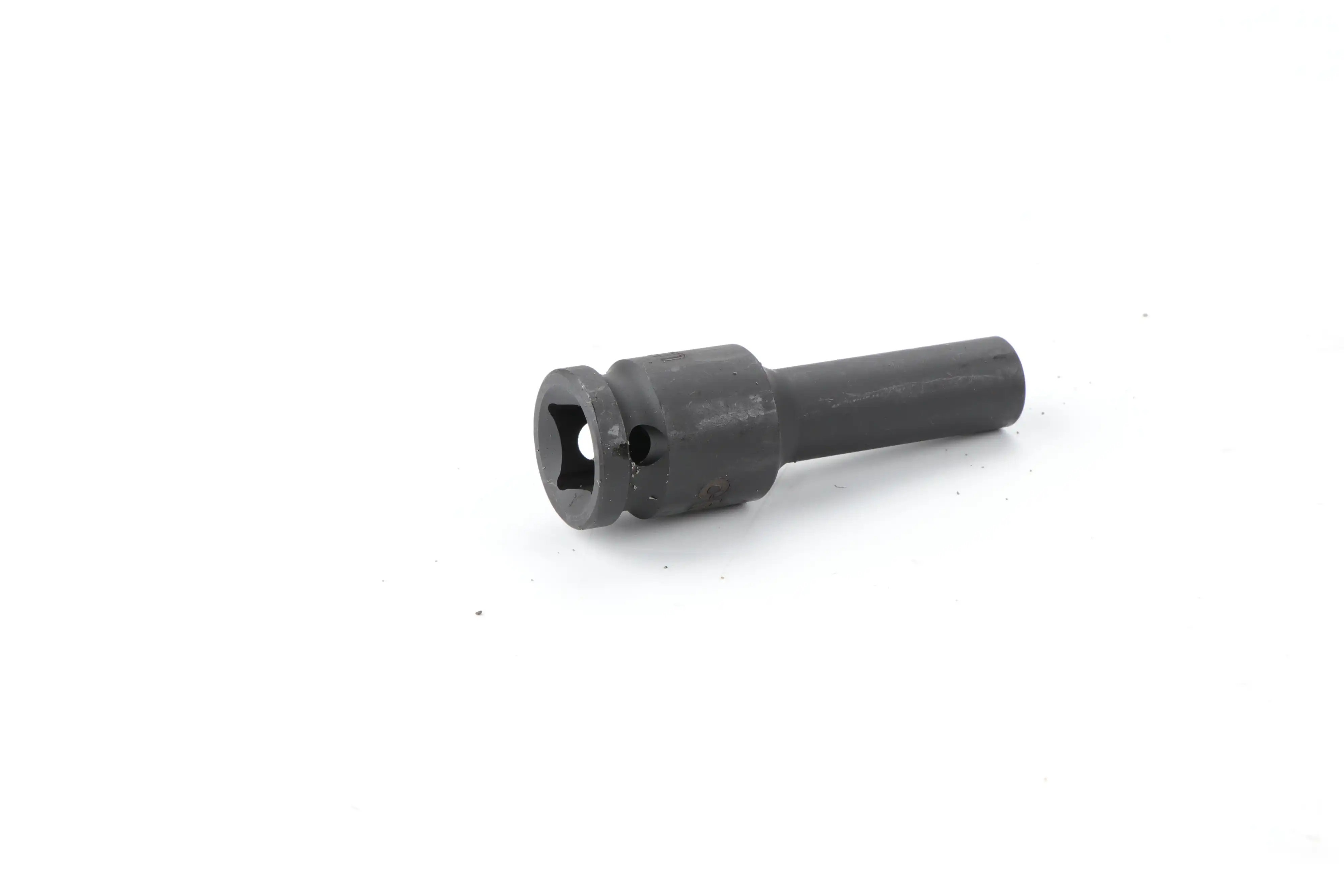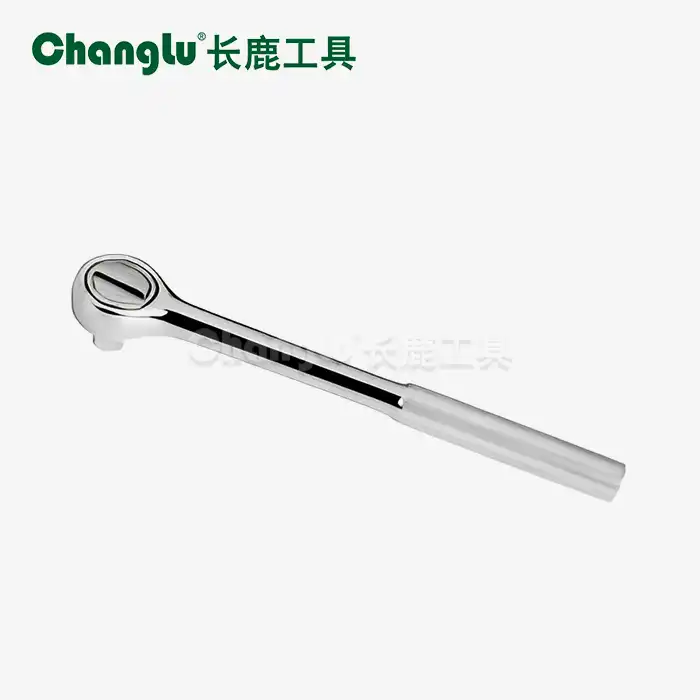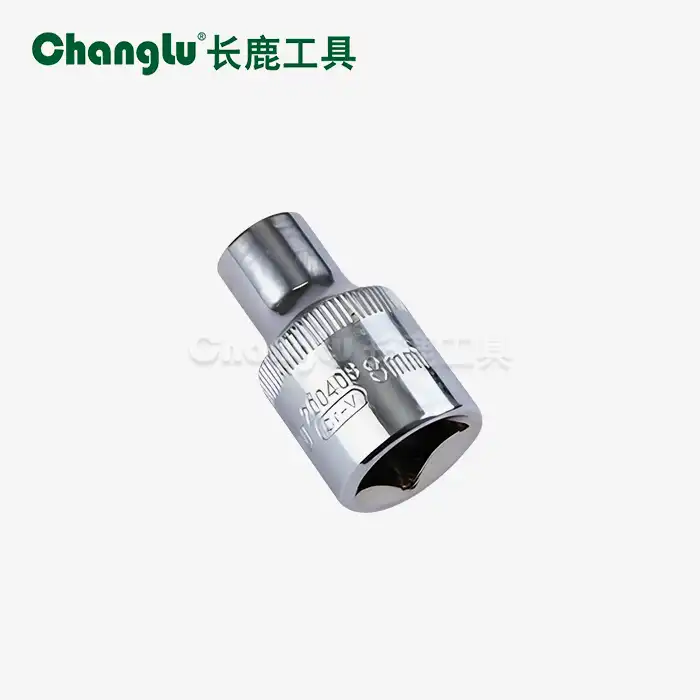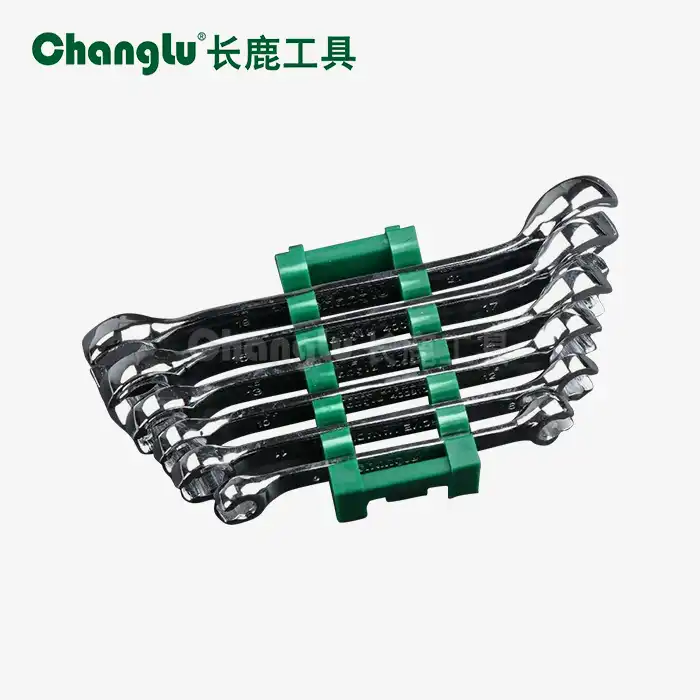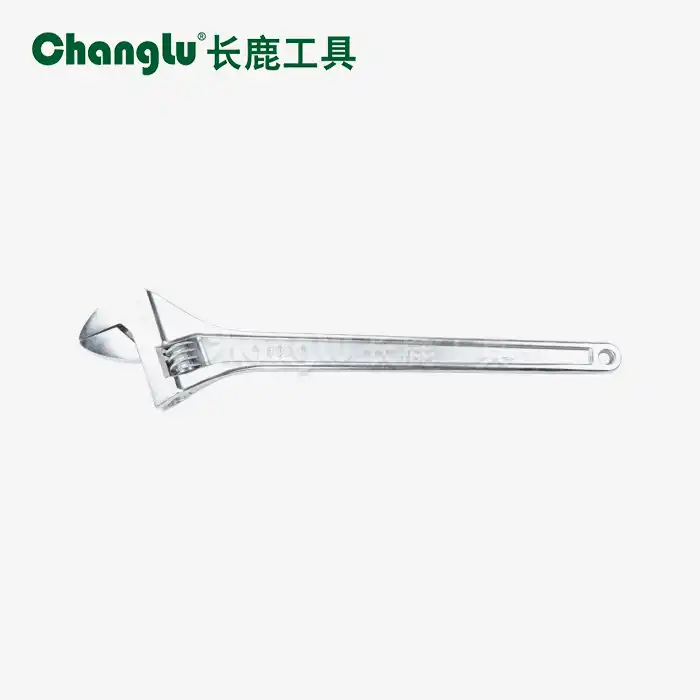Selecting the Right Size and Drive for Your Application
For safe and quick work in a factory, you need to make sure you get the right size and drive for your pneumatic extended hex socket. Let's talk about how to pick the best thing for you.
Understanding Drive Sizes
When you connect a socket to a pneumatic tool, the square drive that holds the socket in place is called the drive size. The 1/2" drive is often used in industry settings because it has a good mix of power ability and flexibility. It is important to make sure that the drive size is right for your air tool and the job.
- 1/4" drive: Good for light work and accurate jobs
- 3/8" drive: Great for light- to medium-duty jobs
- 1/2" drive: Great for heavy-duty work in factories
- 3/4" and 1" gears are only used for tasks that need very high power.
Make sure that the drive size of the extended pneumatic hex socket you choose fits the output shaft of your pneumatic tool. Using sizes that don't match can make things work less well or even damage the tool.
Choosing the Right Socket Size
What the socket size means is the size of the hex-shaped hole that the bolt goes into. Industrial-grade pneumatic extended hex sockets, such as the 1/2" pneumatic extended hex socket (industrial grade), usually come in a number of sizes to fit different types of fasteners. Some common sizes are
- 8 mm to 24 mm 27 mm, 32 mm, 30 mm
- These details will help you pick the right size:
- Find out what kinds of nuts are used most often where you work.
- You might want to get a set of different sizes so that you can choose from more.
- You should buy different plugs in the exact sizes you need for some tasks.
Don't put a bolt in a hole that is too big or too small. It might hurt the bolt or even be unsafe. Never use the wrong size. It will save you time and keep you safe.
The Importance of Socket Length
They're designed so that you can get to screws that are hard to get to or hidden. Think about how deep you need to go before you choose a hole:
- The standard length is good for most general uses.
- Mid-length: Gives you more reach without giving up too much support.
- Extra-long: Great for getting to fasteners that are deeply buried.
Longer sockets may give you a better reach, but they may also make it more likely that they will wobble or bend when you apply a lot of force. For your unique purpose, find a balance between the need for reach and the need for steadiness.
Evaluating Durability and Performance Features
Before buying a 1/2" pneumatic extended hex socket (industrial grade), it's important to think about how long it will last and how well it works. These things have a direct effect on how long the tool lasts and how well it works in harsh manufacturing settings.
Impact Resistance: A Key Factor in Longevity
Industrial-grade air plugs need to be able to take a lot of force and being hit over and over again. To find the best plugs, look for ones that have been built and tried to handle pressure. Some companies make their goods more durable by using special heat treatments or giving them stronger shapes.
Key indicators of good impact resistance include:
- Thicker walls at stress points
- Radius corners to distribute force more evenly
- Manufacturer claims of drop-test results or impact ratings
Remember that a socket that can withstand impacts better will not only last longer, but it will also work better over time.
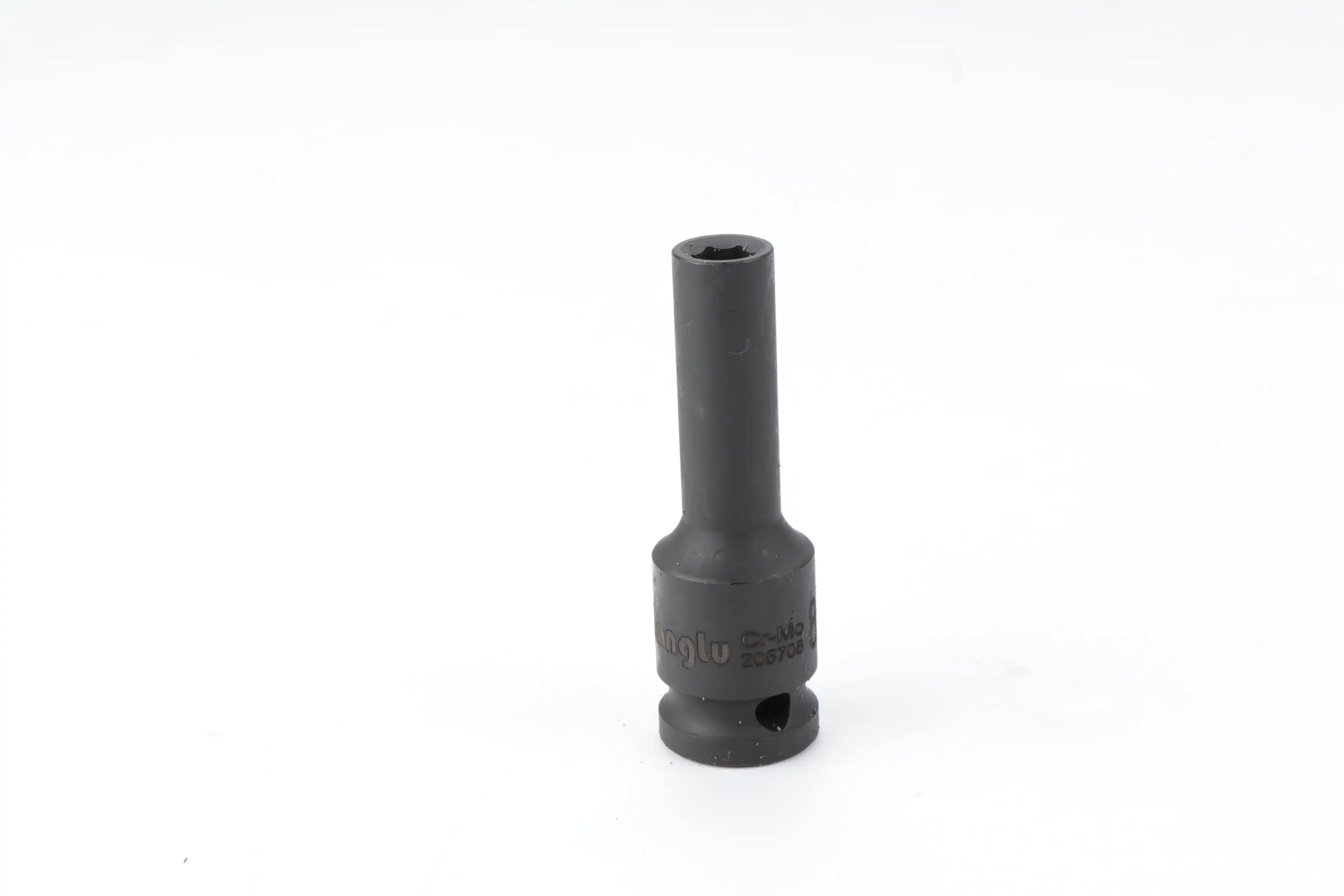
Torque Capacity: Matching Tool to Task
Find out how much force an extended gas hex socket can hold to be sure it can do the job. The best way to find out how much power the motor can handle is to read the brand's specs. You can get a rough idea from the drive size, like 1/2".
When figuring out torque ability, think about the following:
- Maximum force that the socket can handle
- Typical torque needs for your uses
- Pick a plug that can handle more power than you think you will need to keep yourself safe.
It is safer to use a plug with the amount of power it was made to handle. This also keeps the tool accurate and makes it last longer.
Ergonomics and Handling
The physics of an extended hydraulic hex socket are important but not always thought about. It may be less comfy or less useful for someone when they have to use it over and over or for a long time.
Look for traits that make working easier and less tiring:
- Knurled or rough sides to make them easier to hold on to
- Even spread of weight
- It's easy on your hands because the ends are smooth.
There are also plugs made by some companies, such as the 1/2" Pneumatic extended hex socket (industrial grade), that have special coatings or finishes that make them easier to hold on to when they're dirty or wet. This can be very useful there.
Compatibility with Pneumatic Tools
Make sure that the socket you pick will work with all of your current hydraulic tools. This means not only making sure the drive size is right but also taking things like
- Ratings for speed (RPM)
- Characteristics of vibration
- Needs for air pressure
Some high-end plugs are made to keep vibrations from getting to the user from the tool. This can be very helpful for the user's comfort and health in the long run.
Warranty and Support
The manufacturer's guarantee can tell you a lot about how long the socket is expected to last and how confident the company is in their product. Find these:
- How long the warranty lasts
- Terms of coverage (for example, problems with the tools or the work)
- Customer service and new parts are easy to get.
If the warranty is good and the customer service is friendly, you can feel safe, and the cost of ownership may even go down over time.
Taking these durability and performance factors into account will help you pick a pneumatic extended hex socket that not only meets your needs now but also will last for a long time and be reliable in industry settings.
Conclusion
Picking the correct pneumatic extended hex socket is a significant choice that can have a big effect on your business processes. Before you buy the tool, you should think about how well it works, how long it will last, and how well it fits your needs. In this way, you can be sure it will work and last through the rough use of a business.
Make sure you choose something that is of high quality and correct. A good 1/2" pneumatic extended hex socket (industrial grade) can help you work faster and better, and it will also be worth it in the long run because it is durable and reliable.
As you look at your choices, keep the needs of your business and apps in mind. Having the right pneumatic extended hex socket can be very helpful whether you work in big gear repair, put together cars, or work in any other industry field.
Shandong Changlu Tools Co., Ltd. has a wide selection of industrial-grade goods for companies that need stable, high-quality hydraulic tools and parts. Because we know a lot about researching, designing, and making metal tools, we know how to deal with the unique problems that different industries have, from oil and machinery to chemicals and electricity.
If you're a buying manager, general manager, or business owner in the hardware and hand tools industry, we invite you to explore our selection of pneumatic extended hex sockets and other industrial tools. Our dedication to quality, low prices, and on-time delivery takes care of the most common problems that come up when buying industrial tools.
FAQ
1. What is the difference between a standard hex socket and an extended hex socket?
An extended hex socket has a longer body compared to a standard hex socket. This additional length allows it to reach fasteners in deep or hard-to-access areas, making it ideal for applications where standard sockets can't reach. Extended hex sockets are particularly useful in automotive, industrial machinery, and other applications where fasteners may be recessed or obstructed.
2. How do I maintain my extended pneumatic hex socket for optimal performance?
To maintain your extended pneumatic hex socket, regularly clean it after use to remove dirt, grease, and debris. Store it in a dry place to prevent rust. Periodically inspect the socket for signs of wear or damage. Apply a light coating of machine oil to prevent corrosion. Always use the socket within its specified torque limits to prevent deformation or breakage. Following these steps will help ensure longevity and consistent performance of your tool.
3. Can I use a pneumatic extended hex socket with a manual ratchet?
Yes, you can use a pneumatic extended hex socket with a manual ratchet, provided the drive sizes match. However, it's important to note that pneumatic sockets are designed to withstand the high speeds and impacts of pneumatic tools. While they will work with manual tools, they may be heavier and potentially overkill for light manual use. For occasional manual use, they're fine, but for regular manual applications, standard manual sockets might be more appropriate.
High-Quality 1/2" Pneumatic Extended Hex Sockets for Industrial Applications | Changlu
Shandong Changlu Tools Co., Ltd. is an expert at meeting the wants of different industries with high-quality hydraulic tools and parts. The 1/2" pneumatic extended hex pins in our industrial-grade range are made to meet the high standards of professionals working in fields like production, heavy machinery repair, and the car industry.
Our sockets are made from good chrome vanadium steel, which means they work well and last a long time. Pick from a lot of different sizes, including the 1/2" Pneumatic extended hex socket (industrial grade). All of them are made to high standards to make sure they work well and last a long time.
To explore our full range of pneumatic extended hex sockets or to discuss your specific requirements, please contact us at changlu@shukuntools.com. Our team of experts is ready to assist you in finding the perfect tools for your industrial needs, ensuring you receive products that combine quality, value, and performance.
References
1. Slama, K., Koudela, K., Tenora, J., & Mathova, A. (1996). Insect hormones in vertebrates: Anabolic effects of ecdysteroids in Japanese quail. Experientia, 52(7), 702–706.
2. Gorelick-Feldman, J., Maclean, D., Ilic, N., Poulev, A., Lila, M. A., & Raskin, I. (2008). Phytoecdysteroids increase protein synthesis in skeletal muscle cells. Journal of Agricultural and Food Chemistry, 56(21), 9532–9538.
3. Syrov, V. N. (2000). Mechanism of the anabolic action of phytoecdysteroids in mammals. Russian Journal of Physiology, 86(3), 257–265.
4. Isenmann, E., Ambrosio, G., Joseph, J. F., Kazlauskas, R., Goebel, C., & Delbeck, M. (2019). Ecdysteroids as non-conventional anabolic agents: Performance-enhancing effects in humans. Archives of Toxicology, 93(7), 1807–1816.
5. Lafont, R., & Dinan, L. (2003). Practical uses for ecdysteroids in mammals including humans: An update. Journal of Insect Science, 3(1), 7.
6. Dinan, L., & Lafont, R. (2006). Effects and applications of arthropod steroid hormones (ecdysteroids) in vertebrates. Journal of Endocrinology, 191(3), 1–8.
